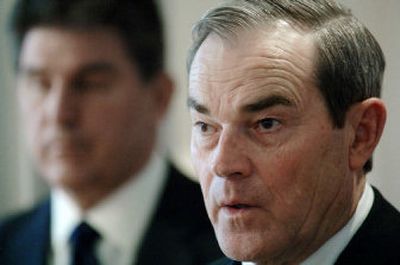Hearings being planned on mine disaster

BUCKHANNON, W.Va. – As the investigation into the Sago Mine disaster took shape Monday, the best hope for firsthand details about the explosion and its aftermath lay in critical condition, fighting a fever.
Doctors treating sole survivor Randal McCloy Jr. declined to speculate on when the 26-year-old would fully wake up from a medically induced coma or to comment on the extent of any brain damage he had suffered in the tragedy that killed 12 fellow coal miners.
But physicians said McCloy’s brainstem appears to be normal and said a fever is common for patients in intensive care. McCloy was breathing on his own, although he remained connected to a ventilator as a precaution, and was responding to stimuli, doctors said.
“He is likely one of the longest survivors of this sort of exposure, not only carbon monoxide but also the other circumstances in the mine, for about 42 hours,” said Dr. Julian Bailes, a neurosurgeon at West Virginia University’s Ruby Memorial Hospital in Morgantown.
The updates on McCloy’s condition came as three more families held funerals Monday for miners.
Federal and state mine safety officials pledged to hold joint public hearings on the accident. Meanwhile, U.S. Sens. Robert C. Byrd and Jay Rockefeller, both D-W.Va., called for hearings into coal mine safety.
Byrd said federal mine safety officials will be called to testify before a Senate subcommittee that will hold hearings on the disaster beginning Jan. 19.
“It’s time for the decisions affecting America’s miners to be made with their best interests at heart. That should be the legacy of the Sago miners,” Byrd said.
Rockefeller said Congress has not held full oversight hearings on the federal Mine Health and Safety Administration since 2001.
Among the questions investigators are sure to ask: Could the trapped miners have walked out under their own power instead of following their training and waiting for a rescue that arrived too late?
West Virginia Gov. Joe Manchin said it is too soon to tell. That opinion was shared by Bob Friend, acting deputy assistant secretary of labor for mine safety at the Mine Health and Safety Administration.
Another focus will be the miscommunication that led to the mistaken belief that 12 of the trapped miners had been rescued alive.
Medical examiners have completed autopsies on the miners. State Department of Health and Human Resources spokesman John Law confirmed Monday that the miners had died from carbon monoxide intoxication.
State officials have not started interviewing witnesses and said they do not know when they will begin.
“We don’t want to make mistakes,” said Terry Farley, an administrator at the state Office of Miners’ Health, Safety and Training. “However long it takes, we want to get it right.”